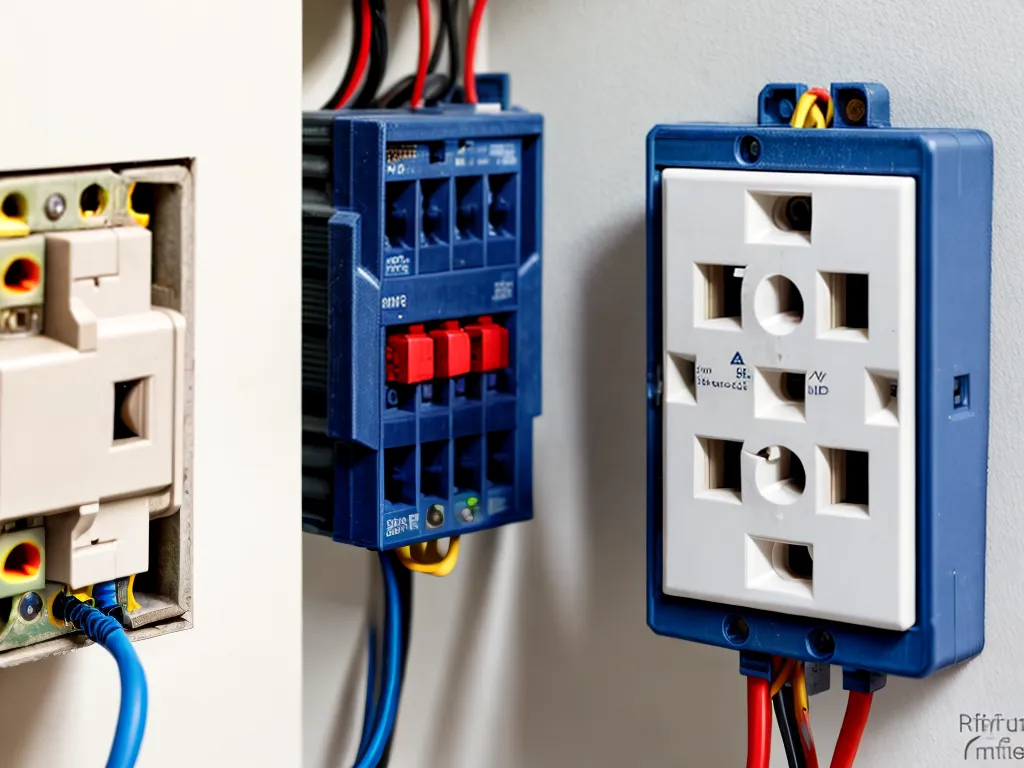
How to Replace an Arc Fault Circuit Interrupter Without Calling an Electrician
Replacing an arc fault circuit interrupter (AFCI) without calling an electrician can be done safely and easily if you follow some basic guidelines. As an electrically savvy homeowner, I have replaced several AFCIs in my home and can share my step-by-step process.
Understanding Arc Fault Circuit Interrupters
Before replacing an AFCI, it's important to understand what they are and how they work.
AFCIs are a special type of circuit breaker that detects dangerous electrical arcing in a circuit and quickly shuts off power to prevent electrical fires. Arcing occurs when electricity jumps across a gap between conductors, which can happen due to damaged wires, loose connections, or overheated cords.
The key difference between AFCIs and standard circuit breakers is that standard breakers only detect overloads and short circuits, while AFCIs can also sense hazardous arcing before it leads to a fire. This makes them an important safety upgrade to electrical systems.
AFCIs monitor the current and voltage patterns on a circuit. When they detect the unique signatures of arcing, they instantly trip and cut power. This difference in how they monitor electricity is what allows them to detect dangerous arcing.
Gathering the Right Replacement AFCI
Before I start any electrical project, the first step is always to gather the correct replacement part and verify it will work properly in my home's electrical system.
For an AFCI, the key specifications I verify are:
-
Amperage rating - Match the amp rating on the existing AFCI (usually 15 or 20 amps for home branch circuits).
-
Voltage - Standard 120V for typical residential wiring.
-
Type of AFCI - There are different types, such as branch/feeder AFCIs or combination AFCIs, that have different capabilities. Match what you currently have.
-
Form factor - Ensure it will fit your home's breaker panel and wiring. Common options are plug-in or bolt-on.
I always purchase a new, UL certified AFCI model from a reputable brand. Used or reconditioned AFCIs can be unreliable, so I avoid those to be safe. The minor cost savings aren't worth the risk.
Turning Off Power and Removing the Old AFCI
With the new AFCI in hand, I follow these steps to remove the old one and safely work on the circuit:
-
Locate the correct circuit breaker in the panel and switch it to the "OFF" position. I double check by turning on a light or outlet on that circuit to verify power is off.
-
Remove the cover plate from the breaker panel to access the wiring. The cover plate is typically held on by one or more screws.
-
Disconnect the wires from the old AFCI. There will be multiple wires attached to screw or push-in terminals. I note where each wire was connected.
-
Remove the old AFCI from the breaker panel. Depending on the style, it may unclip or require unscrewing a nut to release it.
With the old AFCI removed, I now have access to safely work on the wiring.
Installing the New AFCI
Installing the new AFCI is the reverse process of removal:
-
First, I insert the new AFCI into the empty breaker slot until it snaps or screws securely in place.
-
Next, I reconnect the circuit wires to the matching screw or push-in terminals, following my notes on their original positions. Proper wire placement is critical.
-
I double check that all connections are very tight and secure. Loose connections can lead to arcing and AFCI tripping.
-
Finally, I replace the cover plate and all screws. This protects the wiring.
Once installed, I don't turn the breaker on yet. I first conduct safety checks.
Performing Safety Checks
Before restoring power, I always perform a few important safety checks:
-
Verify tight connections - I wiggle each wire to ensure it's very tight and unlikely to vibrate loose over time.
-
Check for exposed conductors - All live wires should be fully inserted into terminals with no copper exposed. Stray strands can cause arcing.
-
Examine the wiring - I scan for any damaged or cracked wire insulation that could short and trip the AFCI. I also ensure wires are routed correctly with no pinching.
-
Close up the panel - The breaker panel cover must be securely re-attached to prevent contact with live terminals.
Once these checks are complete, I can safely turn the breaker back on.
Testing Operation and Troubleshooting
As the final step, I test the AFCI's operation:
-
Turn the breaker back ON and make sure power is restored to all outlets and lights.
-
Press the TEST button on the AFCI. It should immediately trip off. This verifies proper functioning.
-
Reset the breaker to the ON position. If it immediately trips again, I troubleshoot the cause:
-
Check my wiring for errors like loose connections or placement on the wrong terminals.
-
Inspect the circuit for possible faults like damaged wiring or overloaded extension cords that may trip the AFCI.
-
Try temporarily plugging the AFCI into a different breaker slot in case the original slot is faulty.
With the AFCI working properly, installation is complete. Taking the time to follow safety precautions means I can change out AFCIs without needing an electrician!